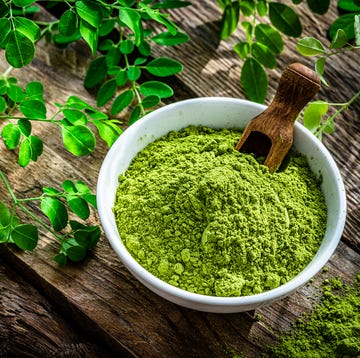If you’ve ever experienced a red bug bite, a swollen sprained ankle or a fever, you’re familiar with inflammation. But you could also have low-level inflammation quietly lurking in tissues and wreaking havoc in your body for years. Inflammation is complex both in the ways it can manifest and how it can be treated. “It was first described in the first century and has been known to underlie disease for centuries,” says Katherine C. MacNamara, PhD, a professor in the department of immunology and microbial diseases at Albany Medical College, who studies inflammation. “It is also known to be essential for life.” To understand when inflammation is appropriate, and when it can be the clue to bigger health problems, it’s important to know the signs of inflammation and how to treat it.
What is inflammation?
“Inflammation is your body's immune response to infection or injury,” says Robert Dolansky, DO, MBA, an American Osteopathic Association board-certified osteopathic physician and the chief of urgent care and occupational medicine at St. Luke’s University Health Network in Pennsylvania. “It’s a reaction from your white blood cells to enter the blood or tissues to protect your body from toxic invaders or injured tissue.” Essentially, we need inflammation to help our bodies heal and regenerate.
Because inflammation can happen pretty much anywhere in your body, there are different substances that may be involved in different situations. “Key early proteins involved in inflammation include TNF (tumor necrosis factor), IL-6 (interleukin 6) and IL-1b (interleukin-1 beta),” says MacNamara. “They are sometimes called acute phase proteins and can impact many different tissues. They can tell the bone marrow to make more immune cells, regulate body temperature to drive fever and act as a signal to activate other cell types.”
Types of Inflammation
Inflammation generally falls into two categories: acute and chronic.
Signs of inflammation
There are five hallmark signs of inflammation:
- Swelling: lump, bump or enlarged area
- Redness: discoloration may occur when blood vessels dilate
- Heat: an affected area feels warm when touched
- Pain: can be constant or just when the area is touched
- Loss of function: difficulty moving a joint, an infection in the lungs, immobility
However, chronic inflammation isn’t always easily noticeable. “This type of inflammation underlies the development of many different diseases that progress somewhat more slowly like cardiovascular disease, metabolic syndrome, arthritis and Alzheimer’s disease,” says MacNamara.
How is inflammation measured?
“Inflammation is not always easy to measure,” says MacNamara. “Some metrics are more obvious — like fever or obvious swelling and redness. Chronic low-grade inflammation is more difficult to measure.” Your doctor may check the levels of C-reactive protein, fibrinogen or circulating antibodies in your blood as well as your complete blood count (CBC) which measures the amount of each cell type in your blood, she explains. “Other tests to measure proteins involved with inflammation are not as easily done and more expensive,” says MacNamara. “For example, there are assays to measure factors like TNF or IL-1b, but they are costly and not routine.” Unfortunately, we are still lacking accurate and accessible ways to evaluate all instances of inflammation.
Treatment
It really depends on the root cause of the inflammation. “For acute inflammation, you want to treat the underlying infection or injury,” says Dr. Dolansky. “Chronic inflammation requires treatment of the underlying chronic medical conditions.” These are some of the treatments your doctor may suggest for lowering inflammation:
Prevention
Your goal shouldn’t be to prevent inflammation entirely because your body depends on it for healing, but you can do things that may lower your odds of developing chronic inflammation. For starters, quitting smoking and avoiding pollutants can help. On top of that, you may want to take a look at your diet. Processed carbohydrates, sugar and omega-6 fatty acids are some foods that contribute to inflammation while omega-3 fatty acids (found in fish and some seeds) quell it, says MacNamara. “A low-glycemic diet is thought to be ideal for minimizing chronic inflammation,” she adds. Regular exercise can also help.
When to see a doctor
It depends on what you’re dealing with. Obviously, if you have something like a broken arm that’s swollen you want to see a doctor right away, but other instances of inflammation can be trickier to identify and treat. “If you have a cold, rash, skin wound or musculoskeletal injury that doesn't resolve with home remedies in five to 10 days, you should seek medical attention for causes of acute inflammation,” says Dr. Dolansky. “For chronic inflammation, you should seek medical attention for long term pain or discomfort in your joints, muscles, stomach or if you are having reflux issues. If you have unexplained weight loss, weight gain or obesity along with any mood disorders, sleep disturbances or persistent fatigue, it’s time to see your physician.”
Nana Mireku, M.D., received her undergraduate degree from the University of Michigan (Ann Arbor) and her medical degree from the College of Human Medicine at Michigan State University. She completed her pediatric residency at the Children’s Hospital of Michigan and her fellowship in Allergy & Immunology (Adults & Pediatrics) at the Detroit Medical Center/Children’s Hospital of Michigan. Dr. Mireku is board-certified through the American Board of Allergy and Immunology and is a Fellow of both the American Academy of Allergy, Asthma, and Immunology (FAAAAI) and the American College of Allergy, Asthma and Immunology (FACAAI).












